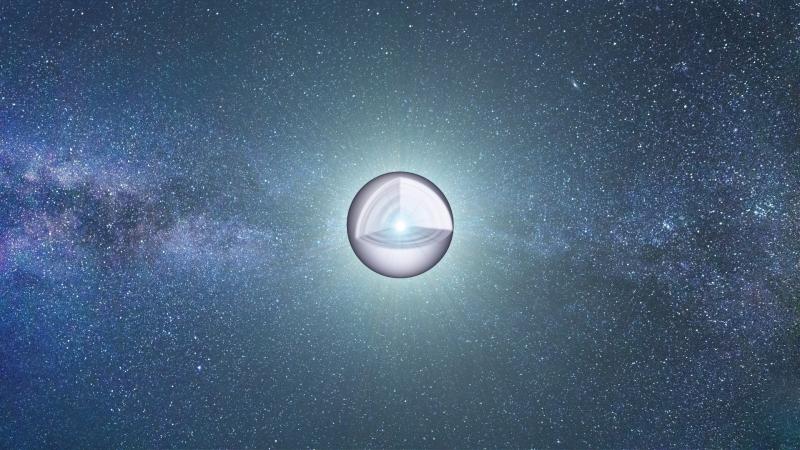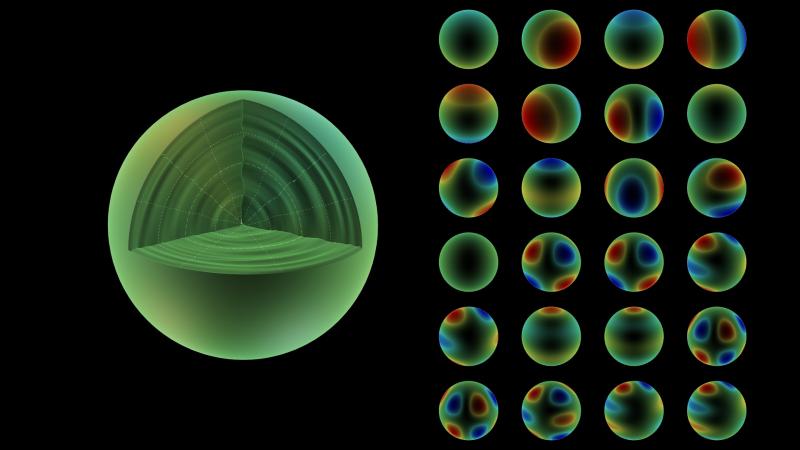Voyage to the centre of a white dwarf
A stellar heart that defies predictions: this is what reveals the first mapping of the interior of a white dwarf star by an international team led by Noemi Giammichele, a young researcher from the Institut de Recherche en Astrophysique et Planétologie. This breakthrough will allow to better understand the physical mechanisms involved in the evolution of stars and of our Sun. This result is published in the journal Nature on January 8, 2018.

Using data from NASA’s Kepler satellite on the pulsations of the star KIC 08626021, an international team of astrophysicists, led by Noemi Giammichele, a young researcher from the Institut de Recherche en Astrophysique et Planétologie (IRAP) in Toulouse, mapped the internal composition of a white dwarf, a distant successor of a star similar to our Sun. The luminosity oscillations observed on the surface of this star could be deciphered using “asterismological” techniques, similar to the methods used by geophysicists to study the inner structure of our planet through the seismic waves caused by earthquakes.
White dwarf stars are the relics of the hearts of nearly 97% of the stars filling the Universe. These true stellar fossils carefully retain the imprint of past physical processes, such as nuclear burning and convective mixing episodes, which are still very uncertain in the current models of stellar evolutionary theories. Obtaining a clear view of the composition of these stars will therefore allow to better decipher the phenomena at stake during the earlier phases of their evolution.
During the white dwarf slow agony, during which they cool down inexorably, these stars pass through phases of instability or start to vibrate. These deep vibrations – or star shakes – are the keys leading to lift the veil on the very interior of these stellar residues. The internal chemical stratification of the white dwarf generates a unique signature on the luminous modulations emerging from the star which, once deciphered, allows the structure to be mapped.

And what is revealed from the deepest of these stars? Not only that the heart is significantly larger and richer in oxygen than predicted, but also the distribution profile of the main chemical elements present. This discovery thus provides a highly accurate test bed for finely calibrating the physical processes of nuclear burning and convective mixing at work within most stars, particularly during the phases of white pre-dwarf stellar evolution. Precise knowledge of the internal chemical composition of white dwarfs is also invaluable to use them as “cosmic chronometers” for dating the stellar populations filling our Galaxy.
Further Resources
- Nature Publication :« Large oxygen-dominated core from the seismic cartography of a pulsating white dwarf » N. Giammichele, S. Charpinet, G. Fontaine, P. Brassard, E.M. Green, V. Van Grootel, P. Bergeron, W. Zong,& M.-A. Dupret
- CNRS-INSU Press Release : Voyage au centre d’une étoile naine blanche
IRAP Contact
- Noemi Giammichele – noemi.giammichele@irap.omp.eu
- Stéphane Charpinet– stephane.charpinet@irap.omp.eu






